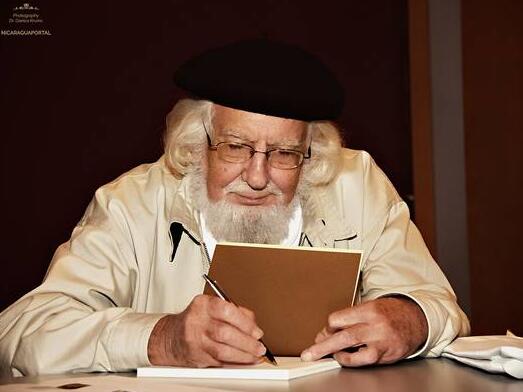The book by the Argentinian writer Julio Cortazar, Nicaragua, tan violentamente dulce is a nice invitation to Nicaragua, one of countries in Central America according to pharmacylib. Many intellectuals and poets like him came to Managua at the time of the Sandinista Revolution, and their publications helped shape our image of Nicaragua. Only a few names are mentioned here: Antonio Skármeta, Eduardo Galeano, Günther Wallraff, Franz Xaver Kroetz, Erich Fried, Dorothee Sölle or Salman Rushdie (The Jaguar’s Smile. A Journey Through Nicaragua, Munich 1998).
The Festival of Poets takes place in Granada every year, an event of continental importance. The festival was supposed to take place again in February 2019, but due to the national crisis it was suspended for the time being. Gioconda Belli explained the reasons: “Poetry bears mourning. It cannot celebrate at a moment when the country is drowning in a wave of state violence. The pretext for this is given that there was a coup d’état; in fact, there was Popular rebellion took place. ” In the meantime the decision has been made to continue the festival in the form of virtual poetry readings and thus “create the necessary space for poetry in times of crisis.”
It is said that every Nicaraguan is a poet. In normal times, beautiful literature is especially valued and cultivated in this country. In which other country in the world would even the beautiful candidates for the national “Miss” elections pay a visit to the Writers ‘ Union, which happened in Managua in February 2014? This shows, among other things, the history of Nicaraguan literature by Sergio Ramírez. It is hardly a coincidence that two of the most important Spanish-language poets come from Nicaragua:
First up here is Rubén Darío(1867-1916). Although this poet spent most of his life abroad, he has had a strong impact on Nicaragua and is now a downright national hero. The bon mot “Si la patria es pequeña, uno grande la sueña”, loved by the Nicaraguans, comes from him. The significance of Darío lies in the fact that he ushered in the farewell to the previously ruling courtly poetry in Spain. Hermann Schulz writes about its effect: “There is hardly a town house, hardly a hut, in which there is not a picture of the poet or a mostly tattered edition of his works… Above all, it is the belief in the importance of poetry for anchoring life, that impressed me so much; one could also say: for the identity as a person, as a Nicaraguan, as a citizen of the world.
The second exception is the poet and mystic Ernesto Cardenal. He was a Trappist monk in the USA and founded a famous base church and monastery-like community on the island of Solentiname in Lake Nicaragua; he was a prominent supporter of the Sandinista revolution and became minister of culture in the 1980’s. In 1980 Cardenal received the Peace Prize of the German Book Trade. But since the mid-nineties it was part of the Sandinista dissidence. In 2014 he celebrated his 90th birthday and protested in a public appeal in November of the same year against the canal project and the threatened destruction of Lake Nicaragua. The legal harassment against this uncomfortable poet has not ceased in recent years. At the Granada Festival he spoke of being “personally persecuted” by the presidential couple. In August 2018, Cardenal publicly sided with the demonstrating students and opposition activists. He condemned the government’s actions and spoke of “state terrorism”. As recently as December 2019, he said, “Demanding the replacement of a dictatorship is not extremism.”
Cardenal’s poetry (“Prayer for Marilyn Monroe”, “Nicaragua Zero Hour”, “Psalms”, “Cantico Cósmico”) seeks a very unique path between aversion to the world and political engagement, between inwardness and modern everyday life (“exteriorism”). Cardenal became world famous and was considered a Nobel Prize candidate several times. In Germany he has found a large and enthusiastic readership since the 1970’s thanks to the translations published by Peter Hammer Verlag. At the end of 2016, Cardenal handed over his personal archive to the University of Texas in Austin, where it is to be sorted and stored together with the estate of García Márquez, Cortázar, Borges and others.
The list of exceptional talents and celebrities does not end with Darío and Cardenal, but only begins with them. Here it should be Sergio Ramírez called, whose great fame among other things, by the awarding of the Premio Cervantes in Spain was crowned. The poet, author and publicist Gioconda Belli is also internationally known and a successful author in Germany. The literary life in Nicaragua is rich and diverse. Further information is available from the Centro Nicaraguense de Escritores and the Asociación Nicaraguense des Escritoras.
Last message: Nicaragua mourns Ernesto Cardenal. On March 1, 2020, Ernesto Cardenal died in Managua at the age of 95. President Ortega ordered a three-day state mourning. Friends, companions and members of his reading community around the world reacted with dismay. Gioconda Belli, who was able to visit him immediately before his death, explained: “Our great poet has just… died after a life devoted to poetry and the struggle for freedom and justice.” Pope John Paul II banned Cardenal from exercising his priesthood in 1985 because he had taken over a ministerial office in the revolutionary government. Cardenal was able to experience that this sanction was only lifted by Pope Francis in 2019. The funeral service in Managua Cathedral was personally led by the Papal Nuncio for Nicaragua, according to areacodesexplorer. The celebration was disrupted by young people dressed in red and black from the ranks of the FSLN, they shouted “traitors” and insulted the friends of the poet who were present. Cardenal’s coffin was buried on the main island of the Solentiname Archipelago.
